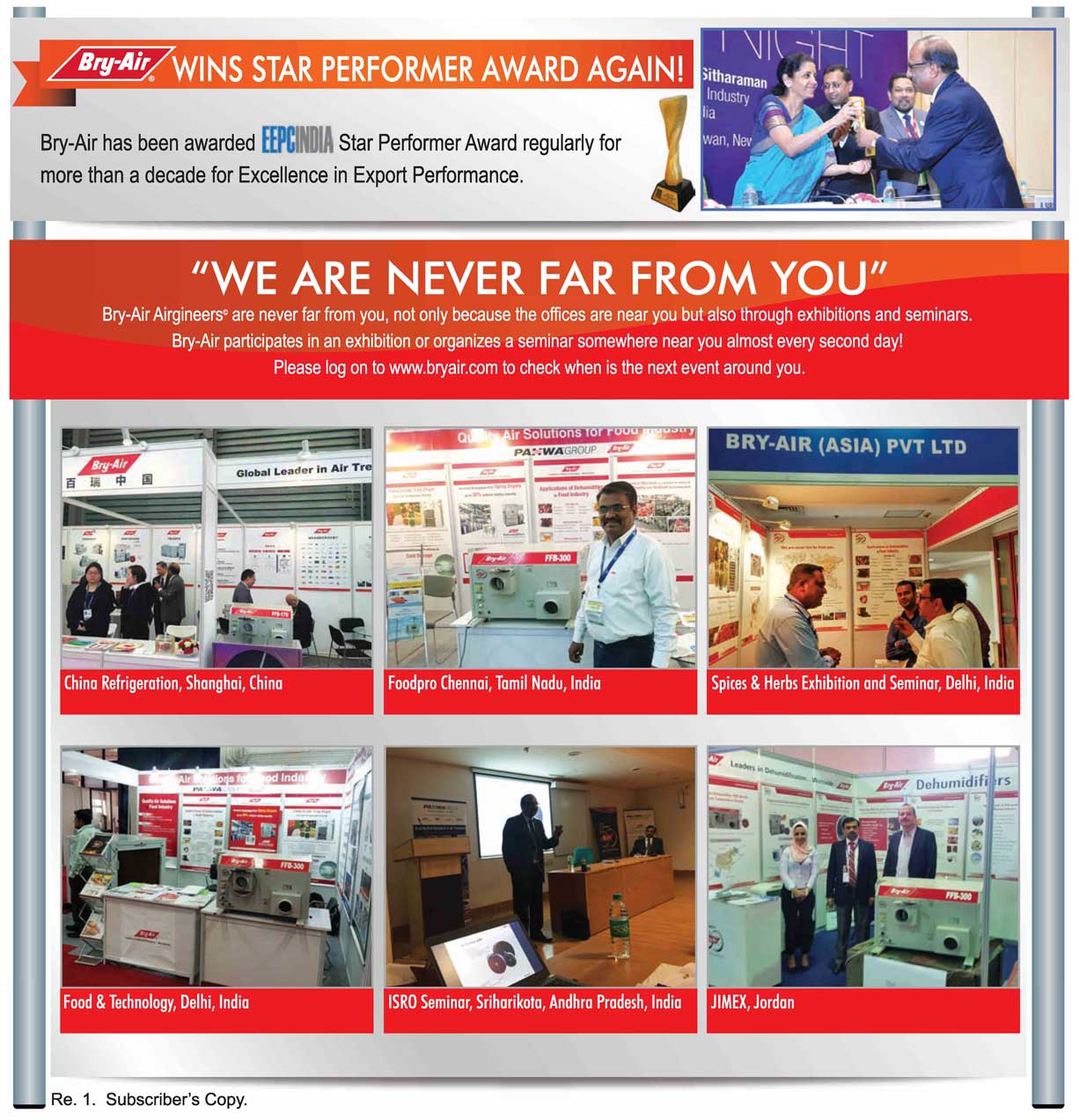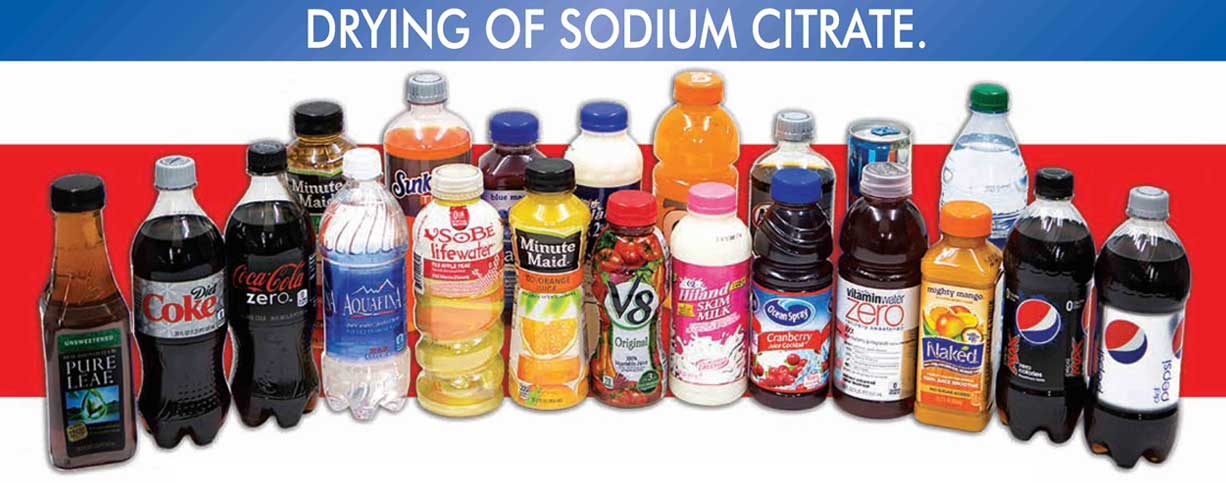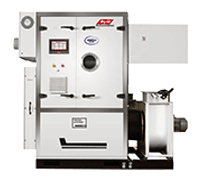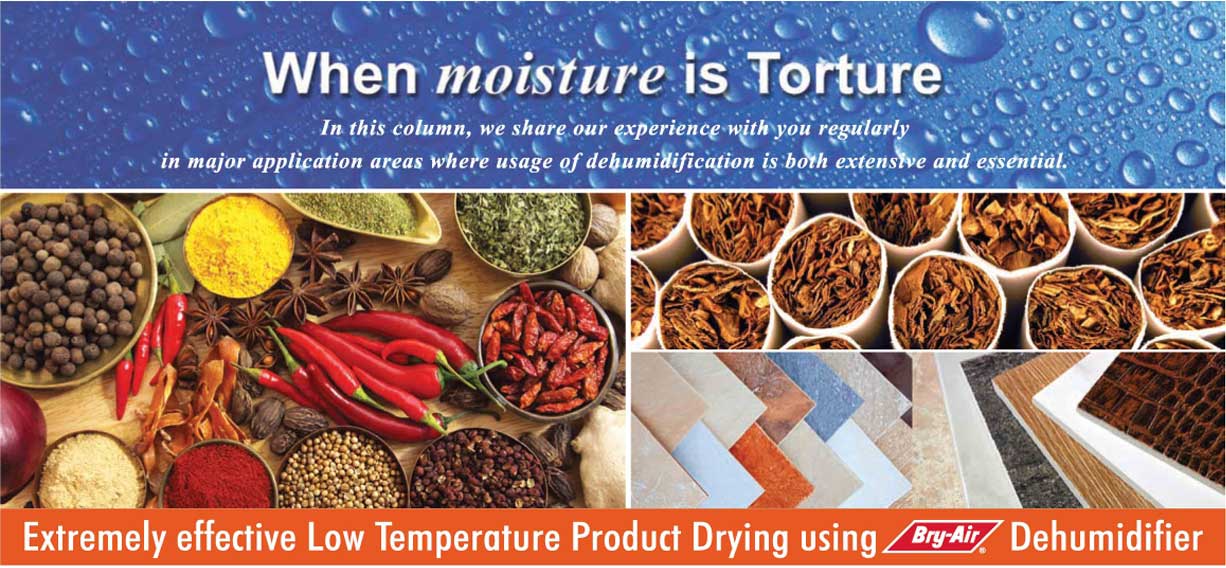


Citric-based drinks, typically ready-to-drink teas, flavoured drinks, juice-based drinks, sports drinks and natural sodas are growing faster as compared to phosphoric acid-based colas. Therefore, the demand for good quality citric acid is particularly strong in the beverage industry. Citric Acid (Sodium Citrate) is used as a strong acid, a tart-flavouring agent, and an antioxidant for these drinks. It is versatile, widely used, economical and safe.

To dry citric acid, crystallized wet Sodium Citrate is passed through tunnel dryers which are fed with dry air either at a dew point of (-) 3°C at 16-18°C (for low quality) or at (-) 20°C at 18-20°C (for high quality). Bry-Air dehumidifiers are extremely effective and economical when it comes to humidity control and moisture removal.
The above are the most obvious indications of a high humidity environment. Food concentrates like whey protein and milk powder, nutraceuticals, juice and soup concentrates, etc. are extremely hygroscopic and vulnerable to high humidity.
When exposed to moisture, these products lose their free flow character and witness reduced shelf life, spoilage, change in color and also create blockages in the conveying machine. Using dehumidifiers to control humidity during processing, conveying, and packaging is the only effective way of maintaining shelf life, quality, texture and color when it comes to food concentrates.

Most commonly, hot air is used for product drying. However, it’s not an ideal method and is extremely ineffective especially in case of temperature sensitive materials. However, this can result in product spoilage as many products like cocoa, gelatin, coffee etc. are temperature sensitive and need to be dried at low temperatures.
If the relative humidity of surrounding air is lower, then the product will give up its hygroscopic moisture to the “drier air” to be in equilibrium with its surrounding. Product drying applications are typically: Bulk (batch) drying when the material is loaded into a compartment and the entire load is dried as a batch and continuous drying: when the wet material is continuously fed into a drying chamber and it leaves the chamber, dried to the desired moisture level.
Desiccant Dehumidifiers are extremely effective in drying the following products:
Food Products:
* Honey * Spices * Herbs * Onion * Garlic * Ginger * Asafoetida * Starch * Dryfruits (Almond, Pistachio etc.) * Coconut * Grapes * Kattha * Papad * Vegetables * Walnut Kemel * Mushroom * Seeds * Beetlenut Leaves * Chillies * Noodles & Pasta
Other Products:
* Rubberised Coir * Carton Boxes * Soaps Tobacco * Wood * Flowers * Investment moulds * Ceramic tiles * Concrete * Carpet and many more.
As every material has different physical characteristics which determine how it holds or gives up moisture, and published data on their drying rates is generally unavailable, selecting appropriate air-drying equipment must be done experimentally. Usually, the sudden change in drying rate (at the critical point) denotes where the initial drying via removal of free moisture ends, and hygroscopic drying takes over. In other words, the product would have lost its free moisture, but would be still hygroscopically saturated. However, the net effective drying surface and the hygroscopic properties cannot be determined in any other way.
Benefits of using Dessicant Dehumidification for low temperature drying over other methods:
Desiccant Dehumidification is the simplest and most cost-effective method to ensure drying without spoilage as the drying is based on the difference in vapour pressures of water in the product and the surrounding air. By physically removing moisture from air through the process of physical adsorption, the evaporative potential of the air is maximized.
Bry-Air Desiccant Dehumidifiers have been used effectively by many manufacturers/ processors of dried products and are an ideal solution o dry products as they ensure:









